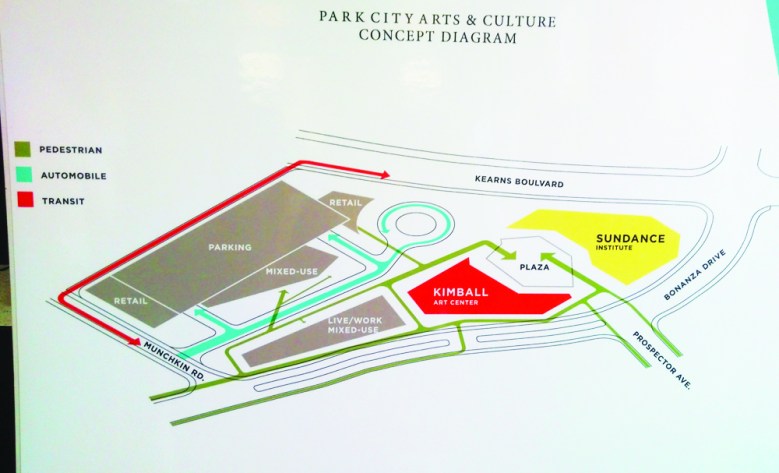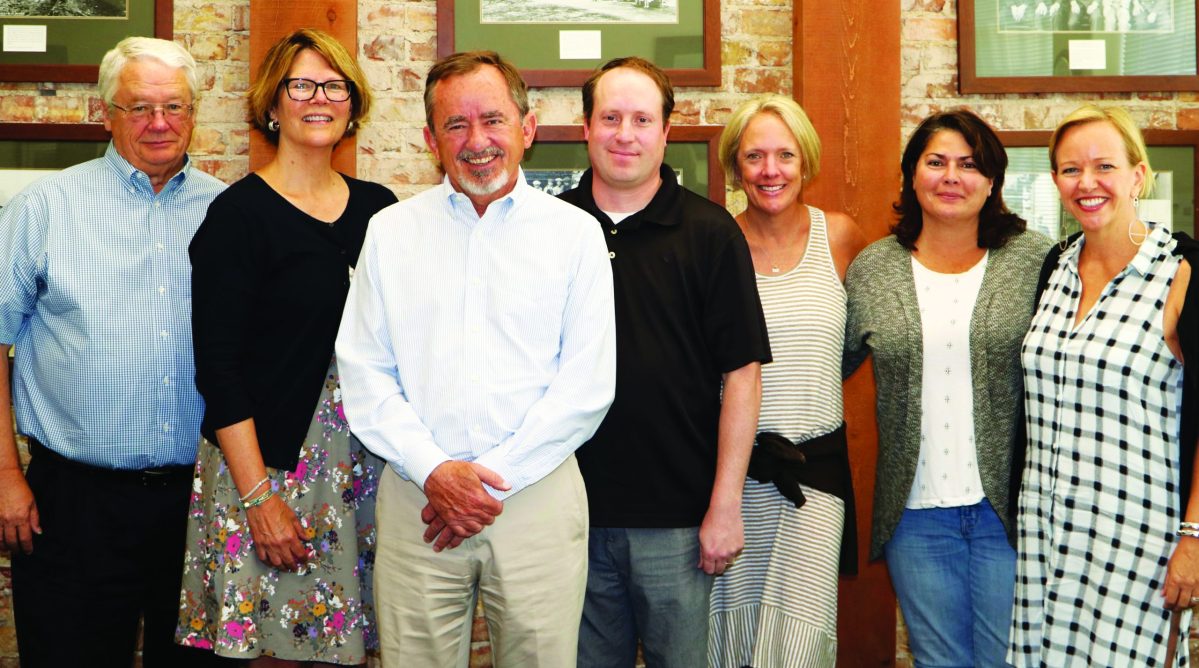According to former Park City Mayor Jack Thomas, the first inkling that the stars were about to align came in the form of a call from a real star: Robert Redford.
After a particularly bad bout of festival-related traffic congestion, Thomas said Redford called City Hall to learn more about the event’s impacts on the community and how they could be mitigated. The founder of the Sundance Institute and its annual film festival drove around the city with staffers, met with council members and fielded questions. A few months later, Thomas was invited to Redford’s resort for a follow-up visit.
According to Thomas, they chatted about their mutual love of skiing and about Utah’s beautiful scenery.
“Of course, our backgrounds are very different, but there are some parallels,” said Thomas. Among them, they are both married to women from Germany, which touched off a discussion about the Bauhaus movement in the city of Weimar after World War I. For Thomas, a noted artist and local architect, the famous school exemplified how a small community could influence arts and culture around the world.
The topic resonated with Redford.
“In our discussion, Redford mentioned he’d love to have a permanent home in Park City,” said Thomas, who lamented that once the festival closes each year, Sundance’s presence on the local landscape largely disappears.
“I said that would be totally appropriate and I’d be very excited about Park City becoming more than what we are and expanding on arts and creativity,” Thomas said.
At the same time, another of Park City’s major arts organizations was also looking for a home. The Kimball Art Center, a 30-year mainstay on Main Street had sold its building and was casting about for a new location. The art center had been unable to gain design approval for an expanded facility in the closely regulated historic district and was occupying a temporary space in a former church.
“There was a danger of losing one or both of them and I didn’t want to see the consequences of that,” said Thomas.
With the Bauhaus playing a seductive tune in the back of his mind, Thomas and others in City Hall began to imagine the possibilities of joining forces with both art organizations to establish an ambitious arts and culture district on one of the last underdeveloped pieces of land within the city limits.
The upshot was revealed in a surprise announcement last July. Park City officials said they had entered into an agreement with a pair of private developers to buy a 5.25-acre parcel of land along Kearns Boulevard that had been slated for a controversial residential and commercial project. At a press conference, flanked by leaders from the Kimball and Sundance, they unveiled preliminary plans for a project that would be anchored by substantial facilities for each arts organization. The proposed master plan also called for a common plaza accompanied by the city-built infrastructure for parking, public transportation, affordable housing and complementary commercial development.
As per the agreement, the Kimball and Sundance would purchase their own parcels on the property to help offset the city’s $19.5 million investment. The city also announced a 1 percent hike in the transient room tax rate to fund its part of the project.
The community’s reaction to the announcement was largely positive.

In the ensuing months there has been little sign of activity on the property that stretches in a northwesterly direction from the corner of Kearns Boulevard and Bonanza Drive, but behind the scenes, a consultant has been huddling with the participants about their specific needs and how to integrate them into a cohesive district.
According to Kimball Art Center Board Chair Maggie AbuHaidar, her organization’s mission to provide exhibitions, art education and events won’t change, but the partnership it already enjoys with Sundance will expand and offer new possibilities.
The two organizations have a history of sharing resources and spaces that will be enhanced as they build out neighboring buildings, she said. She pointed to the Sundance Film Festival as a prime example. For many years the Kimball rented its space to Sundance during the annual 10-day event as a handy headquarters on Main Street. This year it will vacate its temporary spot on Kearns Boulevard to make way for the festival’s New Frontier exhibition.
“This has been a longtime relationship. We are all so close. We don’t just disrupt our operations for them; they provide us with support as well. Once Sundance has bricks and mortar at this new arts and culture district, that symbiotic relationship is only going to grow stronger,” said AbuHaidar.
Sundance Institute Chief Financial Officer and Managing Director Betsy Wallace chimed in describing the proposal as the “perfect alignment” of partners at just the right time.
According to Wallace, Sundance had just completed a new economic impact report demonstrating the growing impact of arts and culture throughout the state.
“It is really a force to be reckoned with,” she said, while venturing to add that as the winters grow shorter, Sundance and other arts organizations may be able to mitigate the potential downturn in tourism dollars.
She confirmed that Redford is excited about expanding Sundance’s footprint in Park City, too.
PARK CITY ARTS AND CULTURE DISTRICT
Potential amenities in the new development include:
Sundance Institute and Film Festival
- 45,000 square feet
- Administrative offices for permanent and seasonal staff
- Archives exhibition space
- 300-seat theater
- Cafe
Kimball Art Center
- 30,000-40,000 square feet
- Administrative offices
- Galleries
- Photo lab
- Kiln room
- Gift shop
- Studios
- Cafe
Park City
- 60,000-90,000 square feet
- Parking
- Bonanza Park transit hub
- Affordable housing
- Potential retail, dining, studio spaces
- Complementary arts and culture/nonprofit uses
- Plazas, walkways, event space, public art
Source: Park City Municipal Corp.
“The DNA of the Institute is part and parcel with Park City but even though we’ve been here 30 years and have year-round offices here, its presence in Park City is largely centered on the festival. This would put a firmer stake in the ground. And that is what he’d like to see as we move forward,” said Wallace.
While hesitating to handicap the master plan process with specifics, Wallace said year-round possibilities include a place to exhibit festival artifacts, a 300-seat theater and much-needed office space.
Of the current space that Sundance leases at Silver Star along the Park City Golf Club she exclaimed, “Oh gosh, we are on top of each other and during the festival, when our staffers from New York and L.A. arrive, it is compounded.”
“Seeing this come to fruition and seeing it get some legs is a wonderful statement of where the city and the state are in accepting arts and culture,” she concluded.
As he completed his term in office in December it was clear that Thomas was pleased to see the parties all moving forward on the plan. While carrying his drafting table out of City Hall he paused to muse once again about the Bauhaus.
“What I hope to see is a neighborhood with two successful anchors, the Kimball and Sundance, a neighborhood that reflects our core values with a small-town aspect and opportunities for businesses that might not be able to afford to be here otherwise.
“Like the Bauhaus, when you get a coalition of creative people you build a center of gravity for arts and culture that will draw artists from around the country. Like Sundance itself has, this district will empower creativity and creative people that will round out our community,” said Thomas.

